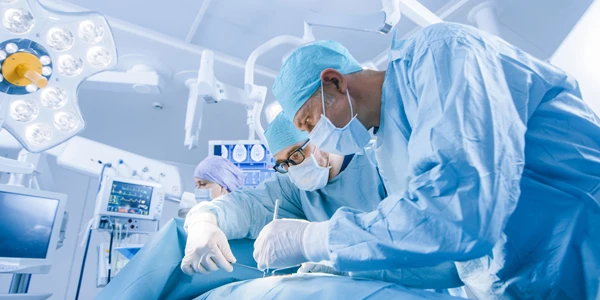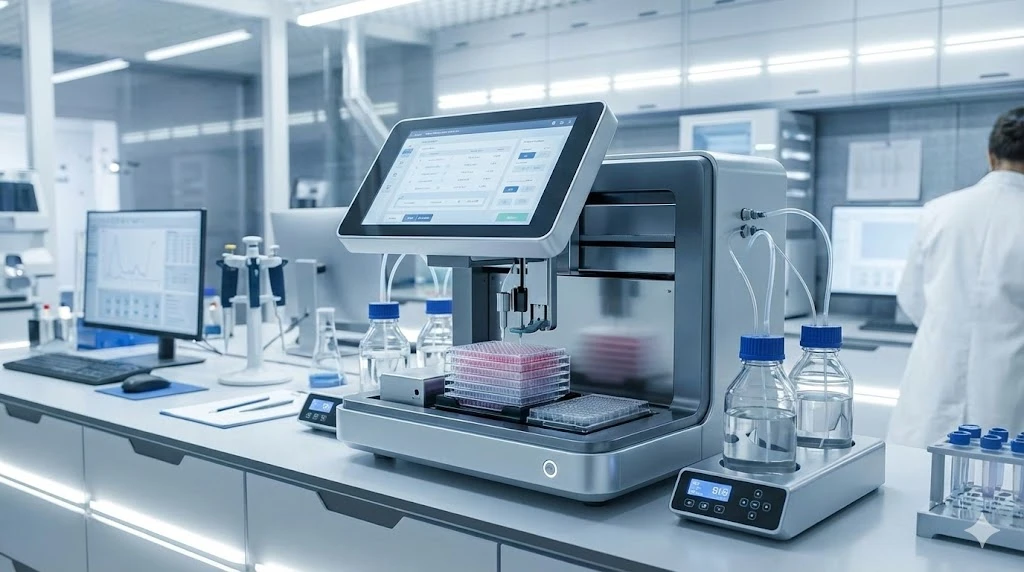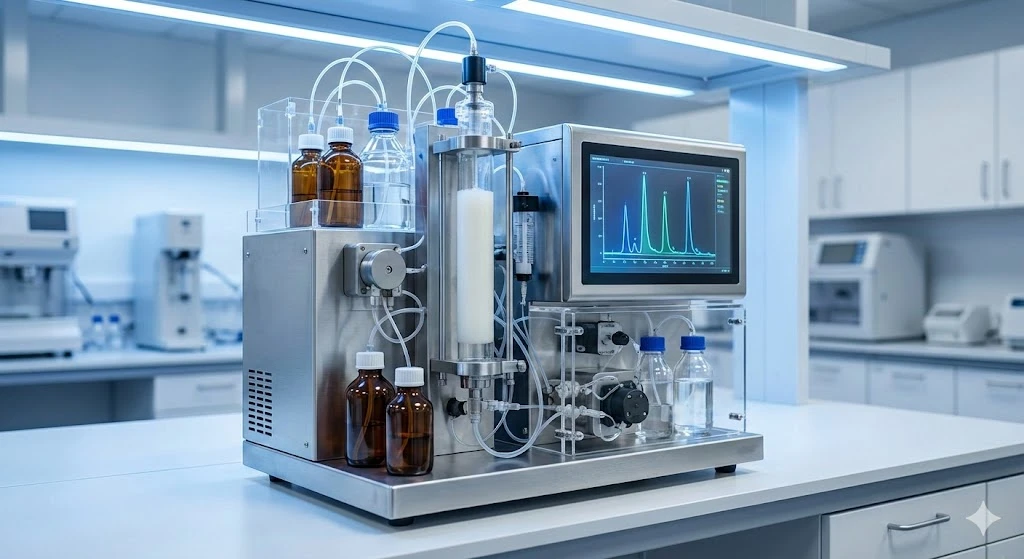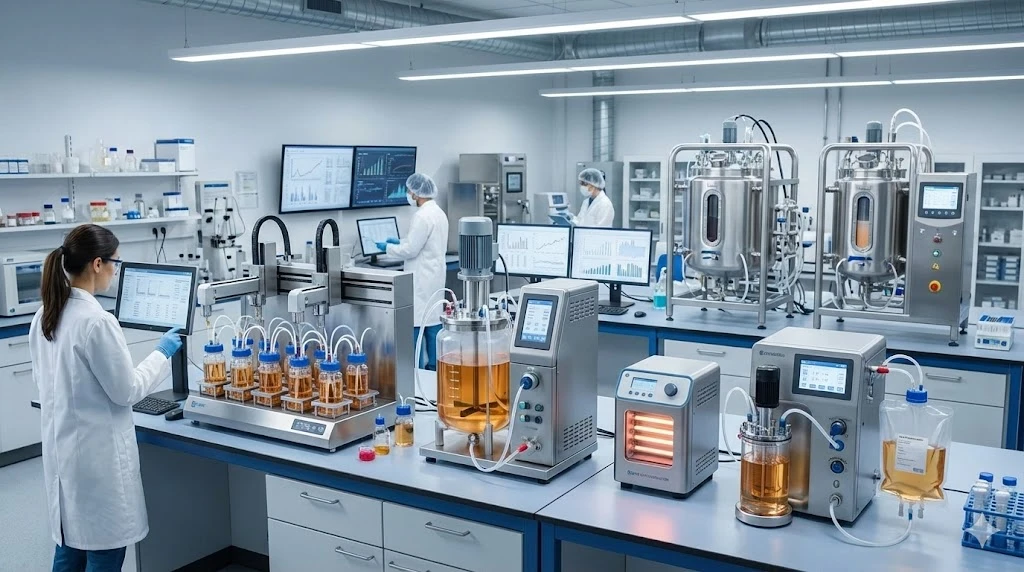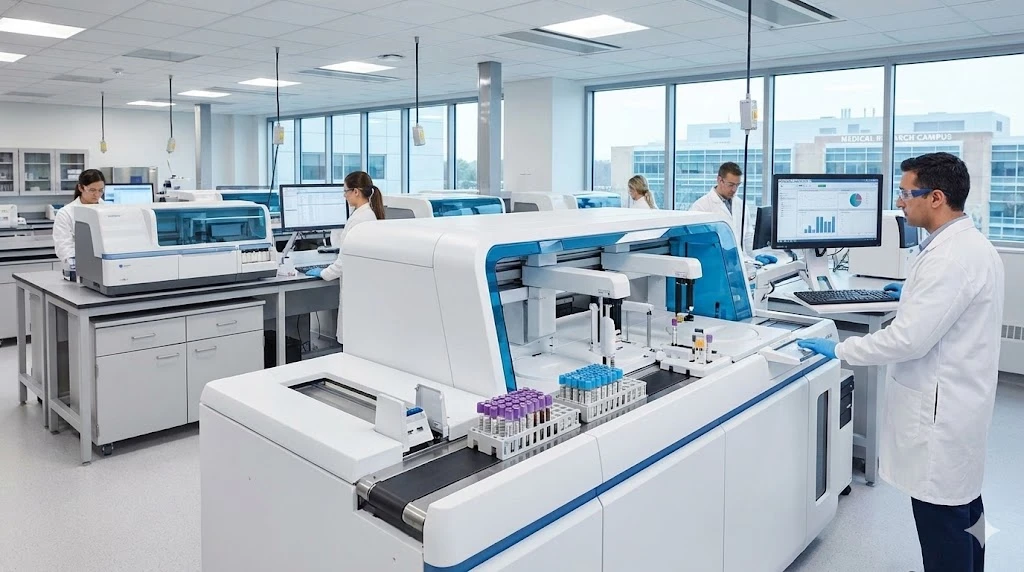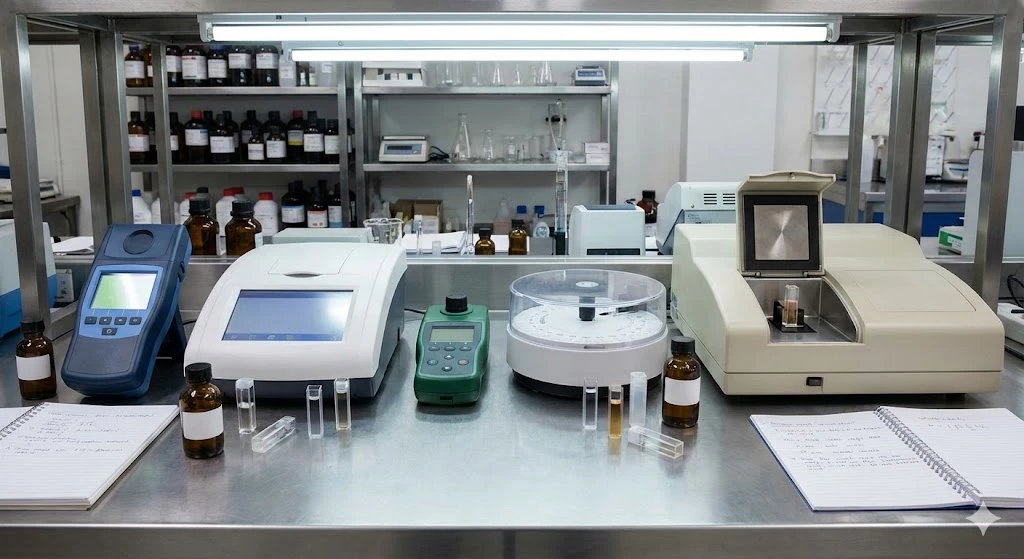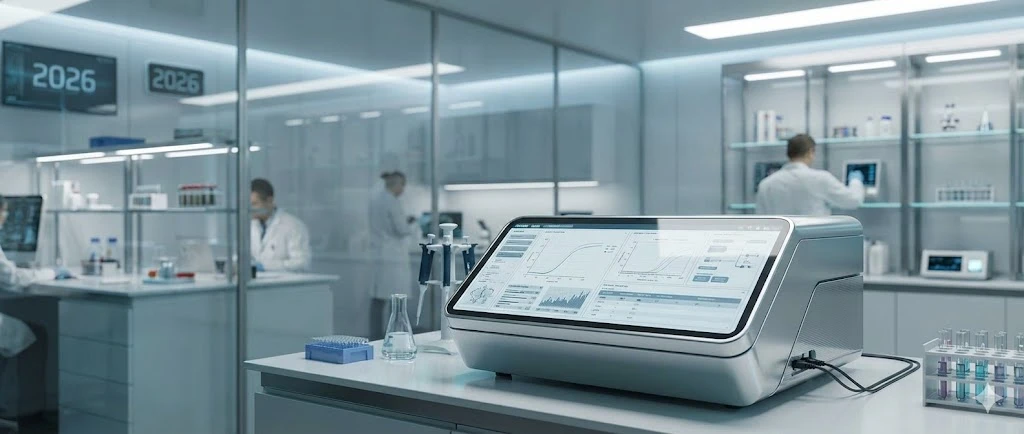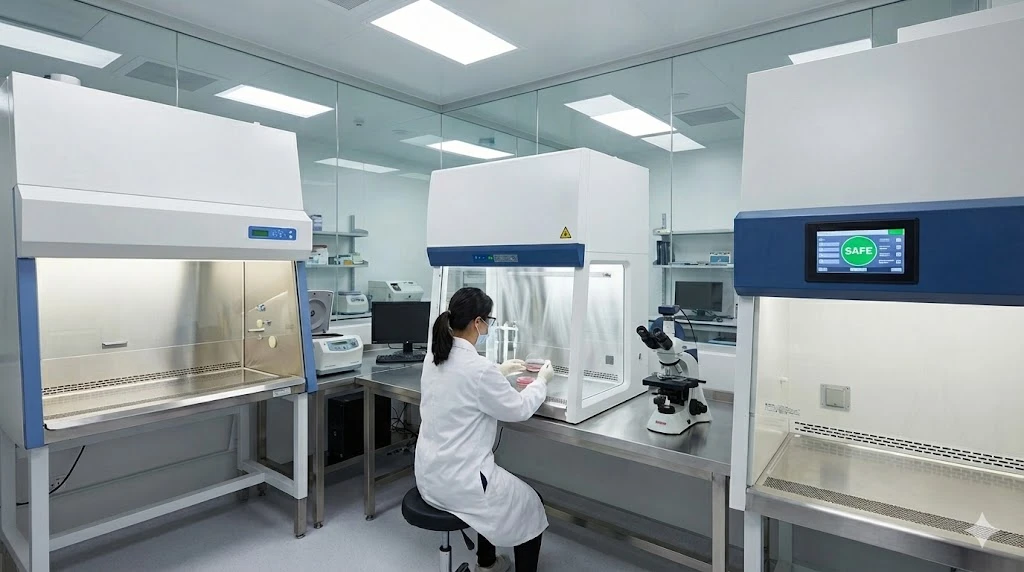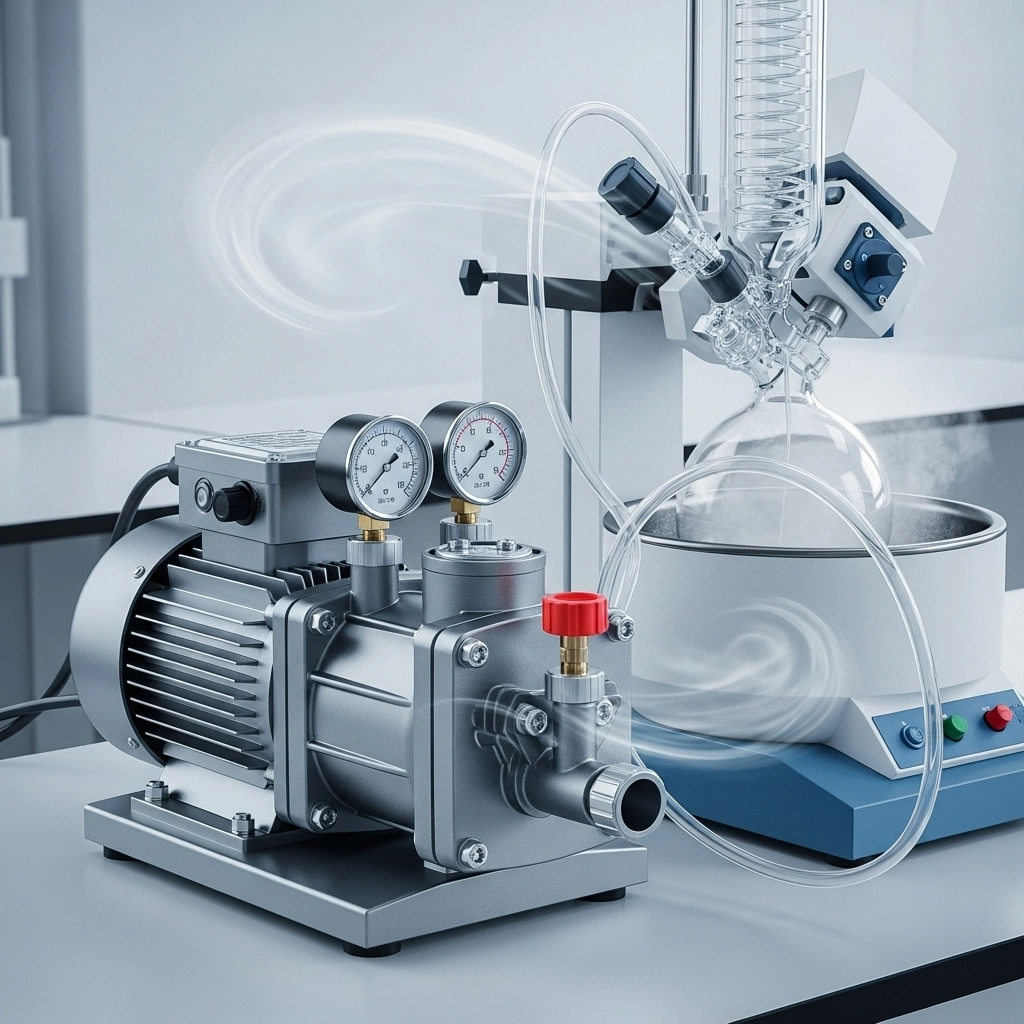
ImageFX (2025)
In the intricate ecosystem of a modern laboratory, certain pieces of equipment, though often operating quietly in the background, are absolutely indispensable. Among these silent workhorses, vacuum pumps stand out as critical components, underpinning the functionality of diverse instruments from mass spectrometers to evaporation systems. Their ability to create and maintain a controlled vacuum environment is fundamental to countless research and development processes.
Understanding the capabilities and limitations of different vacuum pump technologies is crucial for any lab professional, directly impacting experimental success and operational efficiency. This comprehensive guide will delve into the core principles of vacuum generation and explore the most common types of pumps, their technical details, and their essential applications across scientific disciplines.
Understanding Laboratory Vacuum Pumps: An Essential Guide
At its core, a vacuum pump operates on the principle of removing gas molecules from a sealed chamber, thereby reducing pressure and creating a partial vacuum. This technology, with roots tracing back to early scientific pioneers like Galileo, has evolved significantly, leading to a sophisticated array of device formats tailored for various vacuum levels and applications.
Vacuum pumps are broadly categorized into three main types based on their operating mechanism:
Positive Displacement Pumps: These pumps work by physically trapping a volume of gas, compressing it, and then expelling it. They are generally used for creating rough to medium vacuums.
Momentum Transfer Pumps: These pumps accelerate gas molecules from the vacuum side to the exhaust side, achieving much higher vacuum levels. They typically require a "roughing" pump (a positive displacement pump) to operate effectively.
Regenerative Pumps: While less common in general lab settings, these pumps use a rotating impeller to create a series of compression and expansion cycles, often used for specific industrial applications.
In this guide, we will focus on the most prevalent examples of the first two categories: the versatile rotary vane pump and the high-performance turbomolecular pump.
Positive Displacement Pumps: Rotary Vane and Beyond
Positive displacement pumps are characterized by their cyclical operation: they repeatedly expand a cavity to draw in gas, seal off that volume, and then compress and exhaust the gas to the external environment. This method makes them highly effective for achieving low to medium vacuum ranges, typically from 1-50 kPa for basic piston pumps down to ≤ 0.1 Pa for more advanced rotary vane oil pumps. While industrial operations utilize more complex systems, the fundamental concept of discrete volume removal remains consistent.
Common types of positive displacement pumps include:
Rotary Vane Pumps: Widely used in research labs.
Diaphragm Pumps: Often used for clean, oil-free applications.
Liquid Ring Pumps: Employ a rotating ring of liquid for compression.
Piston Pumps: Basic and robust, often for rough vacuum.
Scroll Pumps: Known for their oil-free operation and quiet performance.
The Workhorse: Rotary Vane Pumps
The rotary vane pump is arguably the most common type encountered in research and development laboratory environments. Its mechanism is straightforward yet highly effective: rotating vanes within a circular housing direct gas flow in one direction, actively removing gas molecules from the vacuum cavity.
Key features and advantages of rotary vane pumps:
Vacuum Levels: Available in single or two-stage configurations, allowing them to deliver low to higher vacuums. Two-stage pumps can achieve pressures well below
10−6 bar.Pumping Speed: Known for their relatively high pumping speeds, often on the order of approximately 25 L/s, enabling rapid evacuation.
Oil-Sealed Operation: Most traditional rotary vane pumps are oil-sealed, meaning oil acts as a mechanical lubricant and sealant.
Maintenance: Requires regular oil maintenance and periodic changes.
Considerations: Oil can carry over to the gas outlet, necessitating a mist filter and other safeguards to protect nearby lab equipment from contamination.
Design Benefits:
Compact and simple design.
Air-cooled operation.
Low power consumption.
Often include a bypass valve at the inlet for rapid evacuation.
Common Applications of Rotary Vane Pumps:
Centrifugal Evaporators: Essential for "speedvacs" and lyophilizers to remove solvents.
Vacuum Manifolds: Used in cell culture and solution removal.
Rough Pumps: Frequently employed in-line with high vacuum systems (like those in mass spectrometers) to provide the initial rough vacuum necessary for the high vacuum pump to operate. This combination enhances overall system performance.
There's a growing trend towards oil-free pumps, such as dry scroll pumps, to eliminate potential sources of sample contamination in high-end analytical equipment. Dry scroll pumps are gaining popularity due to their clean operation, lower cost of ownership, and longer maintenance intervals. Explore our full guide on laboratory evaporation systems for more insights into how these pumps integrate.
High Vacuum Achieved: Exploring Momentum Transfer Pumps
Momentum transfer pumps operate on a different principle: they accelerate gas molecules from the vacuum side towards the exhaust side. For these pumps to function effectively, the exhaust side must be maintained at a reduced pressure by a "rough pump" (typically a positive displacement pump like a rotary vane pump).
These pumps are designed for much lower pressure environments, only becoming effective at pressures below 0.1 kPa. This is due to the requirements of fluid dynamics, which govern their operation. The significant vacuum gradient between the chamber and the exhaust allows for highly efficient "fluid" flow of gas molecules through the pump, enabling them to achieve very high speeds and ultimately, ultra-high vacuum levels, often on the order of
The Precision Tool: Turbomolecular Pumps
The turbomolecular pump is a prime example of a momentum transfer pump. It utilizes high-speed rotating fans (or rotors) to impart momentum to gas molecules, driving them through the pump and creating a high vacuum.
Characteristics and Considerations of Turbomolecular Pumps:
High Speed and Volume: They operate at much higher speeds and handle greater gas volumes than mechanical vacuum pumps.
No Exhaust Seal: Unlike positive displacement pumps, turbopumps typically do not possess a mechanical seal at the exhaust port.
Susceptibility to Stall: Small pressures or backstreaming from the exhaust side can cause the pump to "stall," meaning it can no longer effectively pump. This defines an upper limit beyond which these pumps cannot function without a proper roughing pump.
Critical Applications in Mass Spectrometry:
Turbomolecular pumps, when used in conjunction with roughing pumps, are essential in mass spectrometers. They create the ultra-high vacuum necessary for the efficient capture and analysis of gaseous ions following the ionization stage.
Preventing Collisions: In a high-vacuum environment, ions generated in the ion source are less likely to collide with other gas molecules (such as carrier gas or residual air/water) on their path to the detector.
Mean Free Path: High vacuum significantly increases the "mean free path" – the average distance an ion travels without collision. A long mean free path, exceeding the length of the analysis chamber, ensures ions can easily and efficiently reach the detector, preserving signal intensity and analytical accuracy.
Key Applications of Vacuum Pumps in Research & Industry
Beyond their direct role in mass spectrometry and evaporation systems, vacuum pumps are fundamental across a remarkably diverse range of scientific, industrial, and medical applications. Their ability to manipulate pressure environments makes them indispensable for processes requiring controlled atmospheres or the removal of gases.
Diverse Applications Include:
Industrial Manufacturing:
Production of plastics.
Manufacturing of vacuum tubes, including older cathode ray tubes.
Semiconductor processing, where ultra-clean vacuum environments are critical.
Glass and metal hardening processes.
Freeze-drying (lyophilization) for preserving food, pharmaceuticals, and biological samples.
Research and Medicine:
Electron microscopy, requiring high vacuum for imaging.
Radiosurgery and other medical procedures.
Various laboratory processes demanding controlled atmospheres.
We have only touched on a few basic concepts and applications of vacuum pumps. For tips and considerations when making an informed purchase for your specific laboratory needs, stay tuned for our next comprehensive guide.
Final Thoughts on Vacuum Pumps
Vacuum pumps are far more than just auxiliary equipment; they are foundational to the precision and success of countless scientific and industrial operations. From the robust rotary vane pumps handling initial roughing to the sophisticated turbomolecular pumps achieving ultra-high vacuums for sensitive analyses, each type plays a vital role. Understanding their mechanisms and appropriate applications ensures optimal performance, sample integrity, and the longevity of your valuable laboratory instruments.
Ready to enhance your lab's capabilities? Discover a wide selection of high-performance vacuum pumps and related equipment tailored for every scientific demand. Visit LabX today to find the perfect solution for your research needs.
Frequently Asked Questions (FAQ)
Why are vacuum pumps essential in a laboratory setting? Vacuum pumps are essential in laboratories because they create and maintain controlled low-pressure environments crucial for the operation of many instruments, including mass spectrometers, electron microscopes, and evaporation systems, ensuring accurate and contamination-free experimental results.
What is the main difference between positive displacement and momentum transfer vacuum pumps? Positive displacement pumps physically trap and expel gas volumes to create rough to medium vacuums, while momentum transfer pumps accelerate gas molecules to achieve high to ultra-high vacuums, typically requiring a roughing pump for initial pressure reduction.
How do turbomolecular pumps contribute to mass spectrometry? Turbomolecular pumps create the ultra-high vacuum necessary in mass spectrometers to ensure that ionized molecules can travel long distances (mean free path) without colliding with other gas particles, allowing them to reach the detector efficiently for accurate analysis.
What are some key factors to consider when choosing a laboratory vacuum pump? When selecting a vacuum pump, consider the required vacuum level (rough, medium, high, ultra-high), the type of gases being pumped, desired pumping speed, maintenance requirements (oil-sealed vs. oil-free), noise levels, and the specific application (e.g., evaporation, mass spectrometry, filtration).

